Raspberry Pi 5 Launches to Revolutionize Single-Board Computing
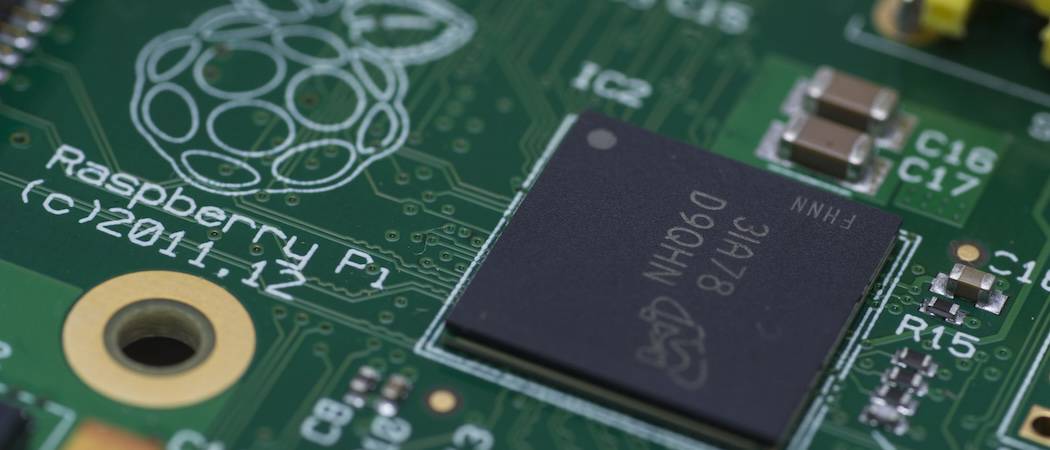
The Raspberry Pi 5 is announced, and it’s packing quite a punch for a computer board the size of a deck of playing cards.
The Raspberry Pi Foundation recently announced the successor to its Raspberry Pi 4. Unsurprisingly dubbed the Raspberry Pi 5, the new single-board computer arrives at the end of October 2023.
It looks set to really take on other budget-friendly computers with power and performance so far unheard of. Here are all the details you need to know.
Serious Upgrades Make Raspberry Pi 5 a Potential Desktop Replacement
The Raspberry Pi never really offered enough “oomph” to be a true desktop replacement. Yes, I was able to use the Raspberry Pi 4 to carry out my daily tasks when my Mac mini was down for repairs. However, the experience was much less than ideal.
The main use of the RPi came in more geeky endeavors, like prototyping electronic devices.

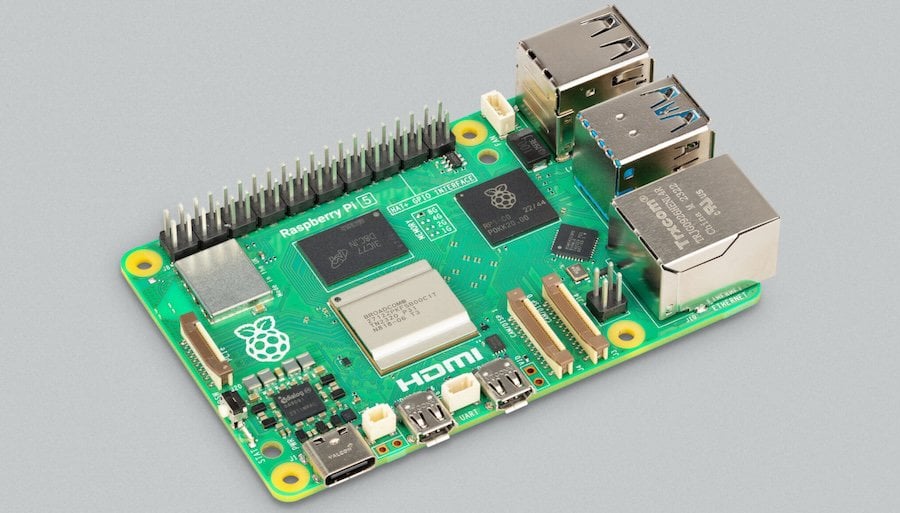
Judging by the specs announced for the newest model, that looks like it’s about to change. The Raspberry Pi 5 packs much more power and performance capability. The processor is faster and more powerful, and graphics support is greatly improved.
The computer also offers more expandability through USB 3.0, a PCI Express 2.0 interface, and dual four-lane 1.5Gbps MIPI transceivers for connecting cameras or displays.
Raspberry Pi 5 Full Specifications
To get into the full details, here’s an overview of the system specs for the Raspberry Pi 5.
- 2.4GHz Arm Cortex-A76 CPU (quad-core, 64-bit).
- VideoCore VII GPU, supporting OpenGL ES 3.1 and Vulcan 1.2 graphics.
- Dual 4K60 HDMI output, supporting HDR.
- 4K60 HEVC decoder
- Dual-band Wi-Fi 5
- Bluetooth 5.0 and Bluetooth Low Energy (BLE)
- High-speed microSD card interface, supporting SDR104 mode.
- 2 USB 3.0 ports, supporting simultaneous 5Gbps transfers.
- 2 USB 2.0 ports.
- Gigabit Ethernet, with PoE+ support with a separate HAT.
- 2 4-lane MIPI camera/display transceivers.
- PCIe 2.0 x1 interface.
- Raspberry Pi standard 40-pin GPIO header.
- Real-time clock.
- Power button.
I’ve longed for some time for a second microSD card slot on the Raspberry Pi for additional storage beyond using a USB drive.
However, the engineers have done one better. Beginning in early 2024, the Foundation will begin offering adapter boards that support mounting M.2-2230 and M.2-2242 NVMe SSDs inside the Raspberry Pi 5 case.
Deciphering the Specs to Understand What You Can Expect Performance-Wise
According to the Raspberry Pi Foundation and some of the early reviews, expect the new single-board computer to be about two to three times faster than its predecessor. Memory bandwidth is also doubled, which will help keep the Pi 5 zippy.
Display-wise, the Raspberry Pi 4 could drive either one 4K60 display or two 4K30 displays. With the Raspberry Pi 5, double that. You’ll be able to have a full dual-monitor setup with both displays at 4K60.

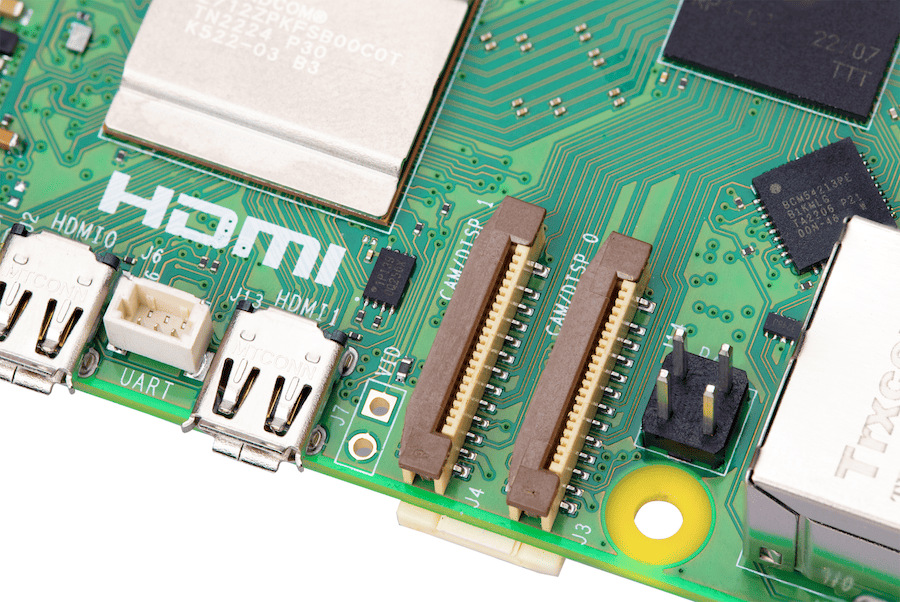
Other nice little upgrades are thrown in, too. The board for the Raspberry Pi 5 now includes mounting holes for a heat sink as well as connectors for a coin battery to power the real-time clock.
Maybe my favorite addition, though, is the power button. Sure, we found ways around the lack of one, but it will definitely be nice to have a dedicated power button for when the system becomes unresponsive.
Other sleek little improvements include support for active cooling, which will be vital if you run graphics-intensive software on your Raspberry Pi 5.
New Raspberry Pi Accessories to Look For
The Raspberry Pi 5 has not just been revamped on the inside, but its accessories have also seen significant enhancements. The newly designed official case now features a built-in fan. Plus, there’s no more fussing with removing the SD card just to slot in the board.
If you’re someone who likes to mix and match or layer up with other cases or add-on boards, formally known as HATs (that’s “hardware attached on top” for the uninitiated), you’ll appreciate that the top lid can now be conveniently taken off.

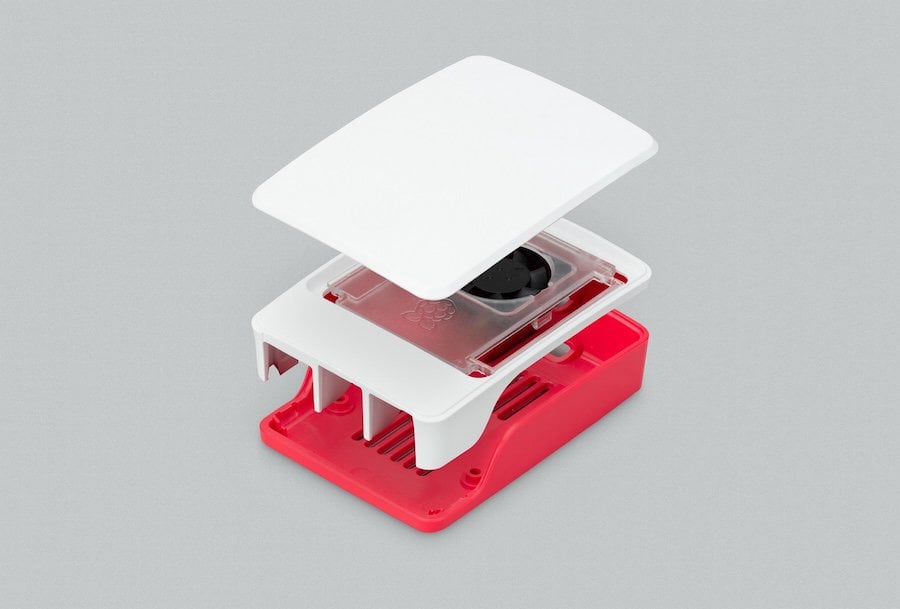
The improved case will set you back $10, a notch up from its predecessor’s $5, but it’s a worthy investment.
In the realm of cooling, there’s an active cooler tailor-made for the RPi 5’s chip. Not only is this cooler charmingly designed, but its $5 price tag matches that of a standard set of passive heatsinks.

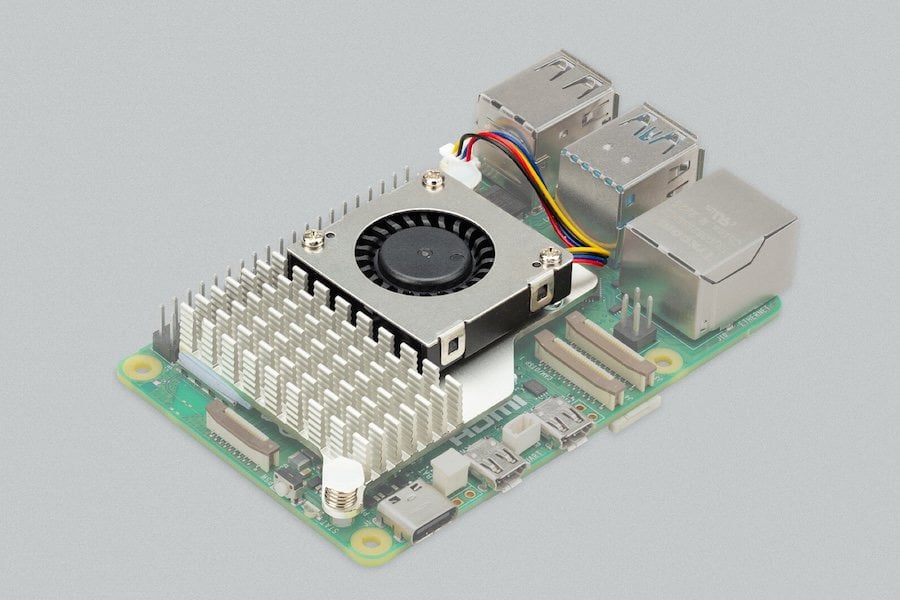
This is definitely a good consideration, especially if you plan on pushing your board to its upper thresholds. Although the Raspberry Pi 5 typically consumes less energy and operates with greater efficiency, its application processor can reach a peak of about 12 watts, in contrast to the RPi 4’s 8W.
Lastly, a quick note for those holding onto older Raspberry Pi power supplies. It might be time for an upgrade. The brand new $12, 27W (5V, 5A) power supply is the way to go.
The older 15W version might leave you wanting, as the USB ports’ current will dwindle to just 600mA. With the 27W variant, not only does the USB current soar to 1.6A, but it also leaves an extra 5W of power for the board – a boon for those intrigued by overclocking.
Getting Your Hands on the Raspberry Pi 5
The new single-board computer launches on October 23, but several resellers already allow pre-orders. The board is available with either 4GB or 8GB of RAM, priced at USD $60 and $90, respectively.
In the U.S., you can pre-order the Raspberry Pi 5 from these retailers:
In the U.K., Pimoroni and The Pi Hut will be your resellers of choice. Folks from other countries can either order internationally or check the official reseller list to see if there’s a local option.
Leave a Reply
Leave a Reply
